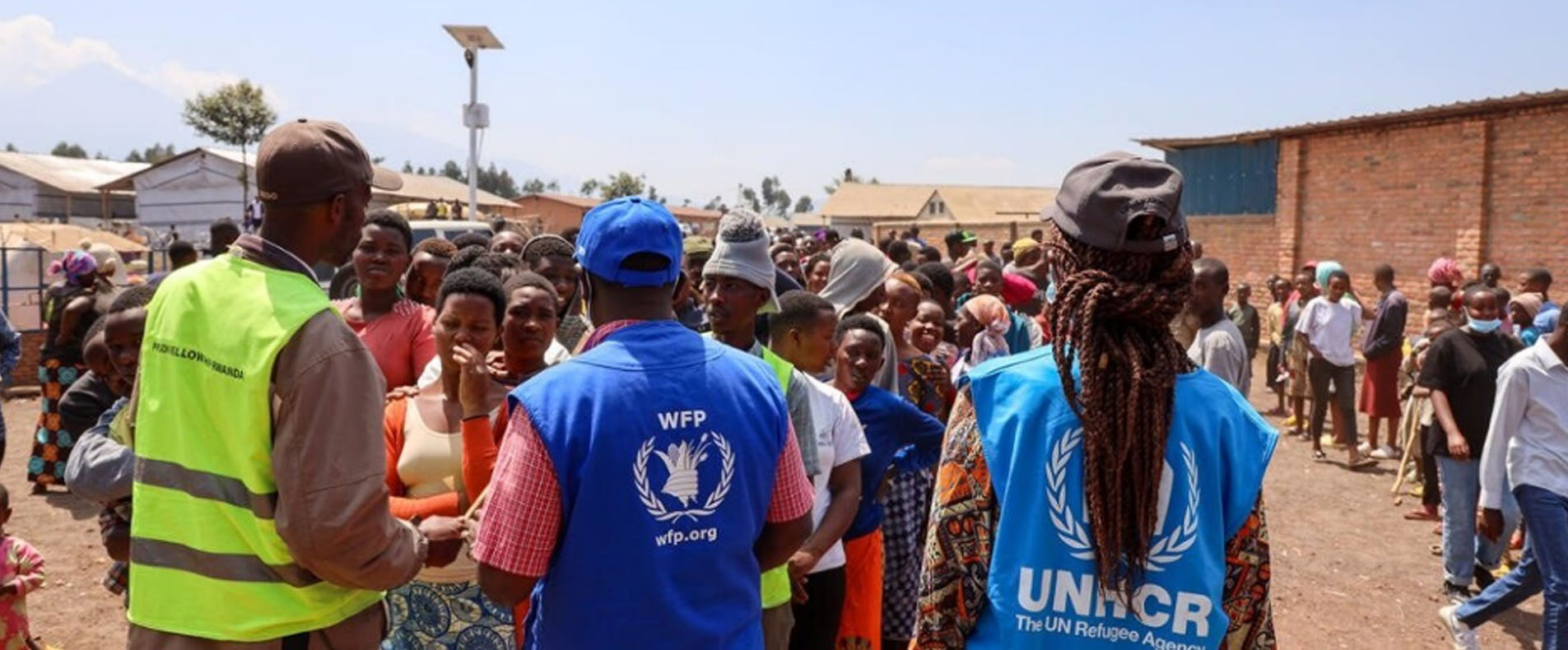Who we are

A few words about the UNAIDS work related to HIV in humanitarian settings
UNHCR and WFP are the two Cosponsors of the Joint UN Programme on HIV/AIDS (UNAIDS) that convene work on HIV services in humanitarian emergencies under the UNAIDS Division of Labour, with the support of the UNAIDS Secretariat. Other Cosponsors such as UNICEF, UNFPA and WHO are among the agency partners for this area of work.
The UNAIDS Secretariat plays an important role in security and humanitarian settings. Humanitarian emergencies is mentioned in the 2021 Political Declaration on HIV and AIDS and highlighted within Result area 10 of the Global AIDS Strategy 2021-2026.
The pivotal and innovative role played by civil society and community-based organizations in addressing HIV is at the core of the Global AIDS Strategy: promoting the principle of the Greater Involvement of People Living with HIV/AIDS (GIPA) at all stages of an emergency and investing in community-led programming contributes to reaching results and to ensuring that no one is left behind.
At the country level, UNAIDS works with Focal Points from the UN Joint Team on HIV/AIDS so that HIV is integrated within the cluster system and refugee programmes and that the collaborative response is evidence-based.
What is the IATT and what are its core functions ?
The Inter-Agency Task Team (IATT) on HIV in Emergencies (HIV-E) is a group of international, and regional level agencies that seek to accelerate the global response to address HIV in the context of humanitarian emergencies. This interagency platform co-led by WFP and UNHCR is comprised of representatives of UN agencies, donors and non-governmental organizations.
The core functions of this platform dedicated to HIV in humanitarian emergencies is to provide thought leadership and technical guidance, to advocate for funding and policy outcomes, to act as an entry point for technical support and to contribute to strengthening country-level partnerships. The IATT HIV-E operates principally at the global level, with the aim of supporting country-level activities that are - as far as possible - nationally owned.
To know more, read the Terms of Reference of the IATT HIV-E
Why respond to HIV in Humanitarian Emergencies?
Emergency-affected populations include those affected by conflicts or natural disasters, both displaced (refugees and internally displaced people) and non-displaced people, as well as host populations, returnees and those in transition to recovery. Humanitarian workers, armed groups and uniformed services personnel also need to be considered in responses. During emergencies, vulnerability to HIV infection may be increased due to the loss of livelihoods and the disruption of family and social networks and institutions, with the result that women, girls, men, boys and transgender may engage in exchanging or selling sex for money, food or services. Conflicts also tend to increase gender-based violence against women and girls; substance use patterns may also change and health care services may be disrupted, preventing people living with, at risk of, and affected by HIV from accessing essential prevention, testing, treatment and care services.
In some prolonged conflicts in Africa, HIV prevalence has nevertheless remained relatively low, for instance among refugees in several countries, indicating a complex relationship between risks and vulnerabilities, potentially protective factors and HIV transmission. However, unless adequate measures are taken, HIV transmission may well increase during post-emergency, recovery and reconstruction periods, associated with increased mobility and population interaction, including between rural and urban areas.